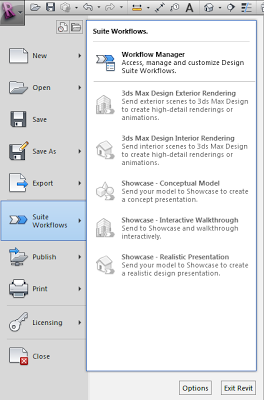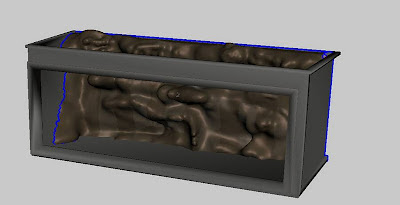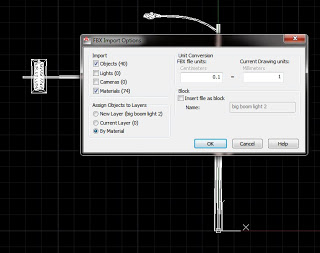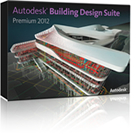Have you tried Showcase yet?
Like Shades of Grey, I’m relatively excited about Showcase:
One of my brightest hopes for Revit 2013 is Showcase, which is a totally separate application. Could this finally be the viewer that works ? I’ve tried Design Review & Navis Works Freedom, Quicktime FBX plugin, Tekla Bimsight … People are doing clever things with Game Engines, but I need a quick and easy way of bringing a lightweight export from the model into meetings.
via
Shades of Grey: BROAD BRUSH & FINE DETAIL
Evidently, you need a pretty decent system to make everything smooth, as Neil Thompson says
@jrostar it eats ram more than revit on full render.
A few links:
Suites Workflow Manager – WikiHelp
Revit Workflows in the Autodesk Building Design Suite – WikiHelp
Installation notes:
I really tried to get Showcase working without installing the whole Building Design Suite, but I haven’t figured it out yet! Here are some of the steps I tried:
- Install Revit, Showcase and Max (separate downloads, not from BDS media)
- Activate all products using a Suite license
- Extract the folder WorkflowInstaller from your extracted Suite archive – Content subfolder.
- Close all Autodesk programs
- Run the file AutodeskBuildingDesignSuiteWorkflows.msi from the appropriate subfolder (x64 or x86)
- Open Revit – Suite Workflows still not visible 🙁
Direct download Showcase 2013 (use this method):
http://trial.autodesk.com/SWDLDDLM/2013/SHOWCASE/ESD/Autodesk_Showcase_2013_Multilingual_Win_64bit.exe
Direct download 3dsMaxDesign 2013 (use this method):
http://trial.autodesk.com/SWDLDDLM/2013/MAXDES/ESD/Autodesk_3ds_Max_Design_2013_EFGKJS_Win_64bit.exe
http://trial.autodesk.com/SWDLDDLM/2013/MAXDES/ESD/Autodesk_3ds_Max_Design_2013_EFGKJS_Win_32bit.exe
AutoCAD Design Suite Standard 2013
http://trial.autodesk.com/SWDLDDLM/2013/DSSTD/ESD/AutoCAD_Design_Suite_Standard_2013_English_Win_32bit.part1.exe
http://trial.autodesk.com/SWDLDDLM/2013/DSSTD/ESD/AutoCAD_Design_Suite_Standard_2013_English_Win_32bit.part2.rar
Some notes about Workflows:
Need to install 3dsMax to make it work:
Revit Workflows in the Autodesk Building Design Suite – WikiHelp
Install Workflows – WikiHelp
BDSP 2013extContentWorkflowInstallerx64
“C:ProgramDataAutodeskWorkflowsProducts.xml”





